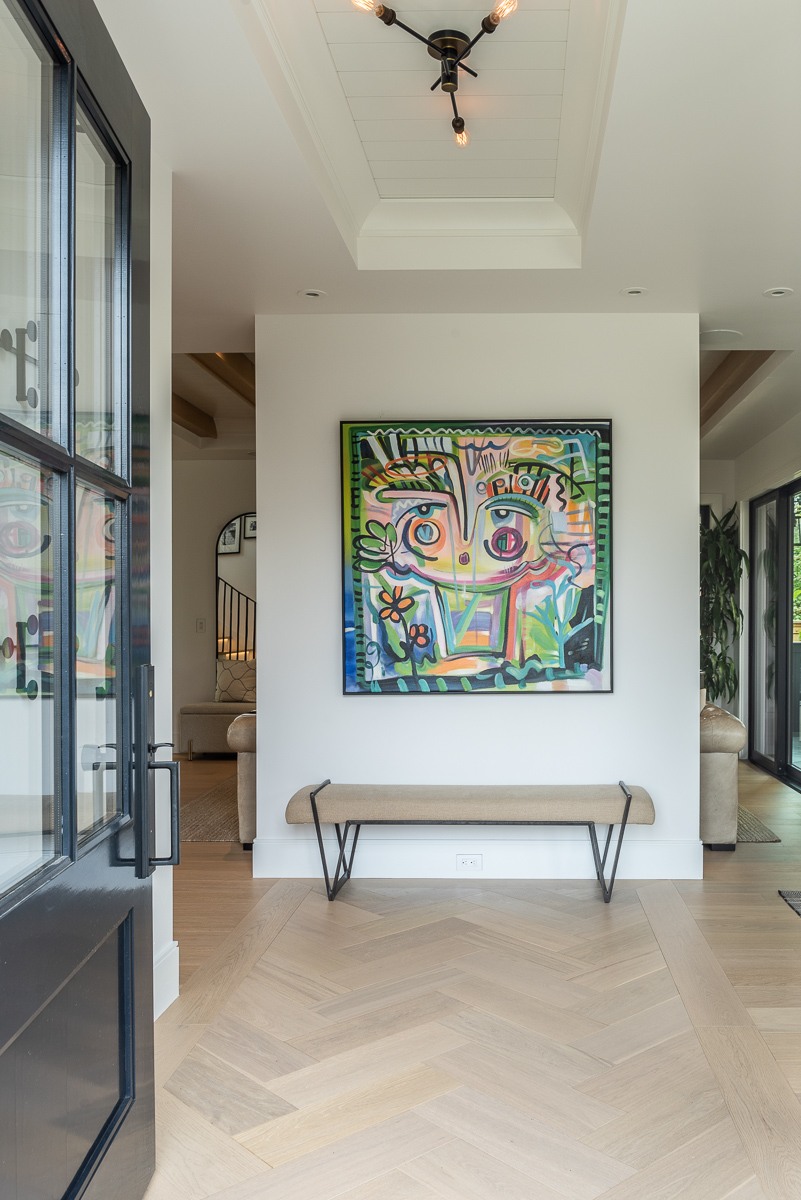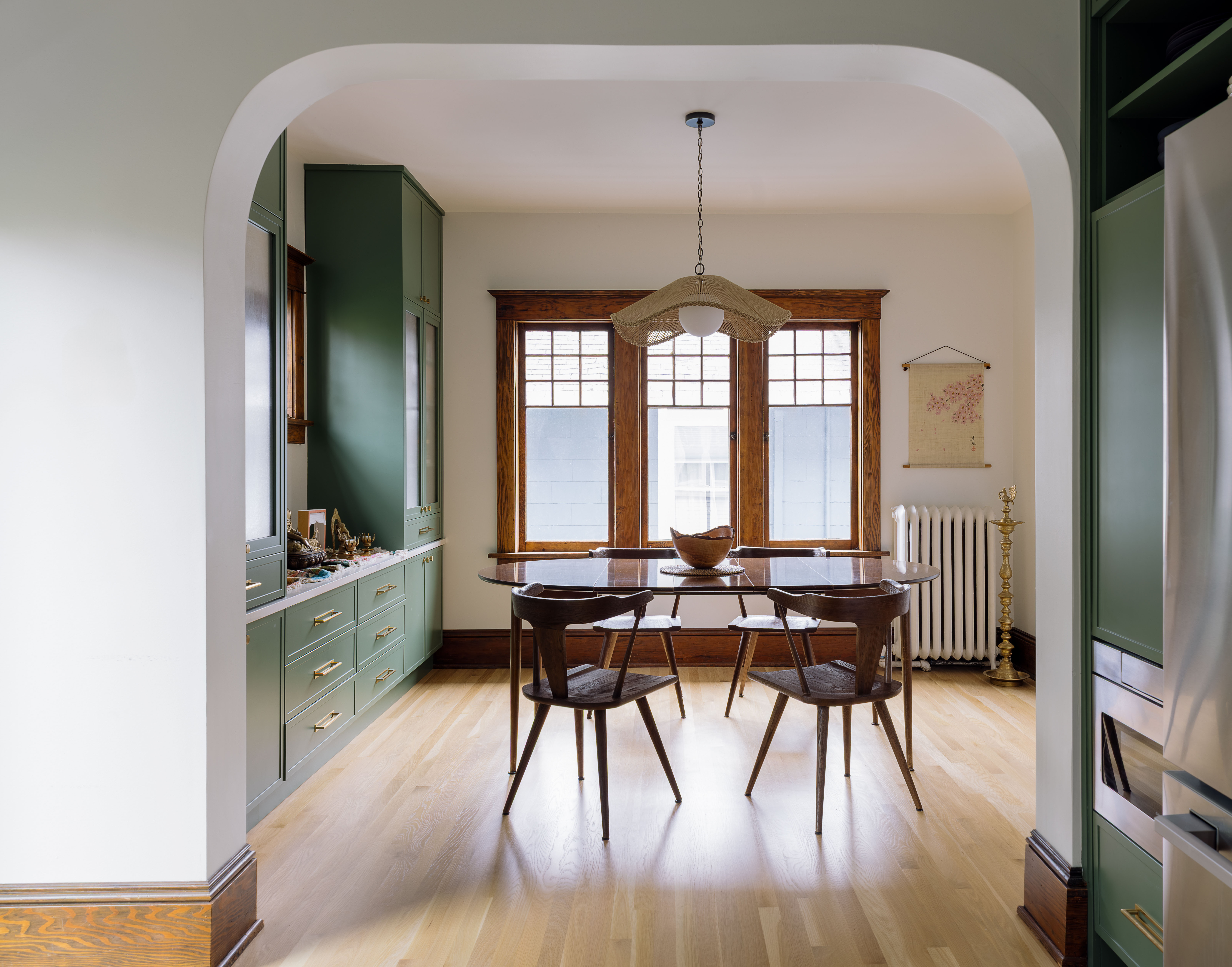The Great Room Break-Up: Why Separated Rooms Are Making a Comeback

For years, the open-concept great room was the goal. Remodels often meant taking down as many walls as possible to create one big, bright space where kitchen, dining, and living all blended together. It felt modern, social, and easy to live in, even if sometimes it started to feel a little too ‘bowling alley’.
Lately, those overly large open spaces are causing us to rethink that openness. Instead of removing every barrier, people are starting to put a few back in and looking for ways to define spaces, create privacy, and bring a little coziness back into their homes.
So what’s behind this shift, and what should you consider if you’re planning a remodel?
How We Got Here: The Age of the Great Room
The open great room has been the go to design feature for homes in the last 10+ years. As daily life got busier, open layouts promised connection: you could cook dinner while chatting with friends or keeping an eye on the kids. The idea made sense and for many homes, it still does.
Open layouts can make small spaces feel bigger, help light travel farther into a home, and make entertaining simple. For tight city lots (a familiar challenge here in Seattle), fewer walls often mean a brighter, more flexible main floor.
But after years of living in these open spaces, many of us have realized there are trade-offs. What once felt free and social can sometimes feel loud, messy, or just a little overwhelming.

Why Homeowners Are Moving Away from Open Concept
Let’s face it: walls are useful.
Privacy and focus
With so many people working and studying from home, private space has become essential. Defined rooms make it easier to take calls, focus, or simply close a door when you need quiet.
Sound and smell control
In an open plan, the sounds and smells like blenders, TV, conversations, and burnt lasagna, travels everywhere. Sometimes that’s great; sometimes it means you’re still smelling dinner hours later.
Energy and comfort
It’s also easier to heat or cool smaller rooms than one large volume of space. A little separation can make a home more efficient and comfortable, especially in our damp, unpredictable Northwest climate.
Function and storage
When every wall comes down, you lose places to hang art, install shelving, or add built-ins. Defined spaces allow for more storage and visual balance, something to anchor your favorite pieces and make the home feel lived-in.
Ritual and meaning
After years of all-purpose spaces, people are rediscovering the charm of rooms with purpose. A dining room can feel special again. A living room can become a place to unplug. There’s comfort in the idea that not every space needs to multitask.
Lifestyle and Cultural Shifts Behind the Trend
This return to separation isn’t just about design, it reflects how our lives have changed.
Work and school at home
Homes now do more than ever. They’re offices, classrooms, gyms, and retreat spaces all at once. When everyone’s sharing a single open floor, it’s hard to focus or decompress. Defined rooms make it possible to coexist without constantly invading each others’ spaces.
Mental health and well-being
We’ve all learned how much our surroundings affect how we feel. The Danish concept of hygge, which is the sense of coziness and contentment that comes from warmth, texture, and calm, feels especially relevant here in the Pacific Northwest. With long, gray winters and short daylight hours, having soft, intimate spaces can make home life feel nurturing rather than confined. Whether that’s a corner with a favorite chair, a room that glows in the evening light, or a spot to curl up with coffee and a view of the rain, hygge helps our homes support our well-being year-round.
Aesthetic evolution
After years of minimalism, there’s a renewed appreciation for warmth, layers, and contrast...and we’re here for it. Separate rooms offer the chance to play with different materials, colors, and moods which is something open plans rarely allow. Each room can have its own personality while still feeling cohesive.

Designing with Definition
Choosing to separate spaces doesn’t mean going back to dark, closed-off layouts. Today’s approach is about thoughtful transitions and flexible boundaries.
- Create transitions. Doorways, arches, and framed openings can define zones without shutting them off completely.
- Use materials intentionally. Varying textures or flooring can signal a shift in function while maintaining flow.
- Play with lighting. Layered and varied lighting (sconces, pendants, table lamps, recessed cans) helps each space feel distinct and inviting.
- Blend open and closed. Pocketing doors, screen walls, or built-ins can soften sound and provide structure while keeping the space visually connected.
The goal isn’t to build barriers, it’s to shape experiences. Consider what you see from each spot in your home. When you open the front door, do you want the kitchen fully in view? Can your workspace close off for focus but still feel connected to family life? Good design finds balance in those sight lines.
When Open Concept Still Works
Even with this shift, open layouts aren’t going anywhere. For many families, they still make perfect sense.
- Families with young kids often prefer openness to stay connected while cooking or doing chores.
- Compact homes benefit from the way open layouts stretch natural light and make spaces feel larger.
- Frequent entertainers might still enjoy a big, continuous area where everyone can gather easily.
As always, context is key. The right layout depends on your home, your routines, and how you want to feel in your space.

A Balanced Approach to Design
At Atelier Drome, we think the best homes are the ones that reflect how people truly live, not just what’s trending. Sometimes that means opening things up, sometimes it means adding layers and definition. Often, it’s a bit of both.
When we talk with clients, we like to explore questions like:
- How do you move through your day?
- Where do you gather, and where do you retreat?
- What needs to be connected and what deserves its own space?
Designing with those conversations in mind allows us to create spaces that evolve over time. Rooms can open up when you want connection or close off when you need privacy. It’s about flexibility, not extremes.
Conclusion: Finding Comfort in the In-Between
The “great room break-up” isn’t about rejecting open concept, it’s about finding the right balance. We’re learning that homes feel better when they can adapt to different moments: open when life feels lively, enclosed when you need calm.
In the end, it’s less about walls and more about intention. Whether your home is fully open, partially divided, or filled with cozy little nooks, the goal is the same—to create spaces that make everyday life a little easier, warmer, and more connected.




